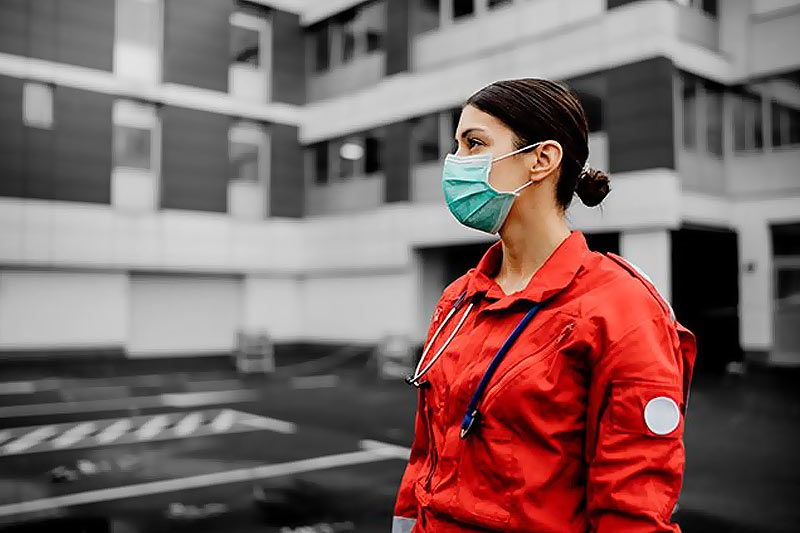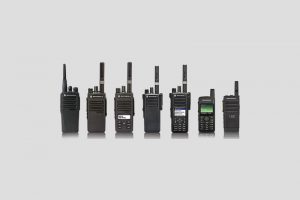Increase Efficiency for Your Hospital Teams and Response Times with Two-Way Radios

 Two-way radios can increase efficiency and the reliability of critical communications in many industries, but the effectiveness of these radios is best demonstrated in hospitals. Hospitals care for hundreds – and sometimes thousands – of patients at a time, which means that communication across teams needs to be highly effective and reliable.
Two-way radios can increase efficiency and the reliability of critical communications in many industries, but the effectiveness of these radios is best demonstrated in hospitals. Hospitals care for hundreds – and sometimes thousands – of patients at a time, which means that communication across teams needs to be highly effective and reliable.
Unfortunately, without a reliable communication infrastructure in place, there is a lot of room for miscommunication and delays that can impact patient safety and the quality of care they receive. Two-way radios are the ideal solution to ensure that all hospital staff can communicate when it matters most.
There are several key benefits of two-way radios that function to increase efficiency and boost response times.
Reliability: Unfortunately, cell phones aren’t an ideal method of communication across hospital teams. Many areas of hospitals ban the use of cell phones so that they don’t interfere with medical devices and testing equipment. And even in areas where cell phones are allowed, they may not get a signal, or the call may drop due to the shielding material used in the construction of hospitals. Two-way radios are a much more reliable communication method in the hospital setting. With the right two-way radio system, you can ensure that team members can communicate with one another from anywhere on the hospital’s campus.
Emergency Features: Many two-way radios also have key features that are incredibly important in settings that experience emergencies, such as hospitals. These include Transmit Interrupt for emergency communications and an Alarm to notify staff of an evacuation. These features ensure that important communications get prioritized, and all staff are notified of emergencies as soon as they happen.
Ease-of-Use: Two-way radios are easy-to-use, which means you don’t have to spend tons of time training workers on how to use them. Additionally, workers can respond to other team members no matter what they are doing. Many radios have a direct, push-to-talk feature that allows them to respond to communications while they are on the go, without dropping what they are doing. Some two-way radios also have Bluetooth compatibility for wireless headsets, ensuring that medical personnel have unimpeded use of their hands for patient care.
Flexibility in Capacity: Two-way radios offer a ton of flexibility to accommodate either group calls or private one-on-one conversations. This flexibility means that hospital staff will be able to communicate what they need to, to all the individuals that they need to quickly, without wasting time calling each person individually. In emergency settings, which are frequent at hospitals, this fast and efficient communication can literally save lives.
Security: There are several ways in which security benefits are demonstrated with two-way radios. First, the communications can be encrypted, ensuring that private calls remain private. This feature is essential in all healthcare facilities due to HIPAA requirements. Secondly, two-way radios can increase response times when there is a threat at the hospital. Hospitals and their staff face an array of security risks daily, ranging from theft to abuse of medical staff. Fast response times, made possible through the use of two-way radios, can often prevent or minimize the impact of any security threat.
Durability: Two-way radios in hospital settings are often in use on a near-constant basis, as they are traded between shift workers. But they are designed and built to withstand even the heavy use required by hospitals. And they are durable enough to withstand being dropped. Some two-way radios are waterproof, ensuring that they can work even if something is spilled on them or they are submerged. This feature is critical in a healthcare setting, since there are many fluids that can splash or be spilled on communications devices.
Sanitary: Two-way radios can be cleaned and sanitized thoroughly to prevent the spread of pathogens. This feature is crucial in hospitals. Health care providers are required to change PPE, such as gloves, and thoroughly wash their hands between treating patients. All shared equipment must be disinfected after it has been used by one patient. While many cell phones are incapable of being sanitized to the degree required for patient care settings, two-way radios can withstand the rigorous cleaning necessary to prevent the spread of bacteria, viruses, and other harmful contaminants or pathogens.
Light and Portable: Two-way radios are battery-operated, and despite this, many of them are still very light and portable. Most workers can clip them on their person and go about their business without even realizing that they are wearing a two-way radio – until they need it. This portability means that the radio won’t get in the way of health care workers completing their tasks, but it will help them be more efficient while they are working.
The bottom line is that two-way radios offer a lot of benefits that make them the ideal method of communication within hospitals. They are safe, secure, and durable. And best of all, they offer a way to ensure reliable and effective communication occurs without delays. Models such as Motorola’s XPR75550e and XPR3500e have been found to be incredibly successful at meeting the communication needs of health care facilities. The bottom line is that two-way radio communication is one of the best ways to ensure that your hospital’s team members are performing at their peak efficiency and delivering excellent patient care.
